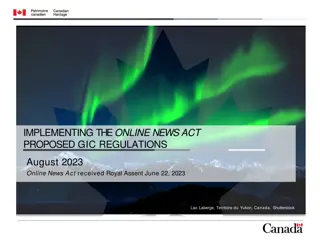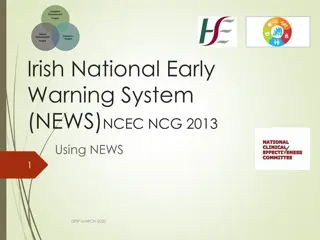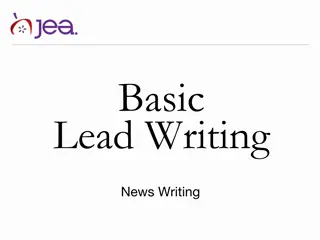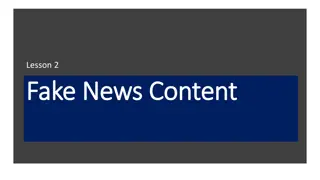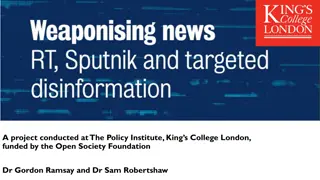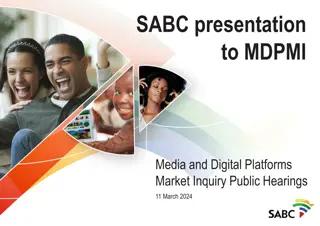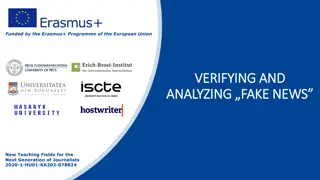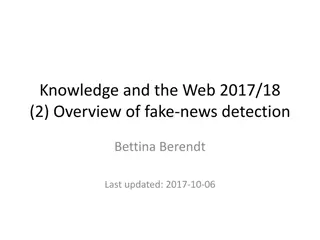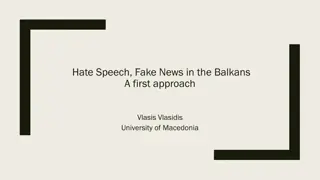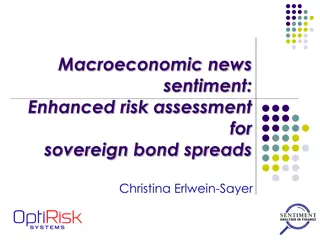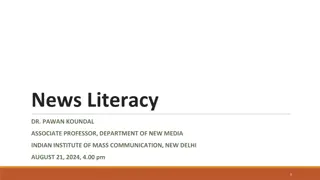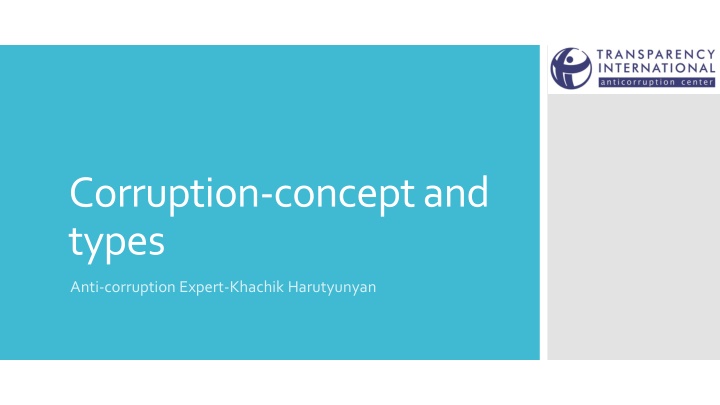
Corruption: Concepts, Types, and Anti-Corruption Efforts
Explore the etymology, history, and definitions of corruption, its impact on institutions, and views from experts like Khachik Harutyunyan and Jacob Svensson. Learn how corruption is perceived universally and its implications on governance and society.
Download Presentation

Please find below an Image/Link to download the presentation.
The content on the website is provided AS IS for your information and personal use only. It may not be sold, licensed, or shared on other websites without obtaining consent from the author. If you encounter any issues during the download, it is possible that the publisher has removed the file from their server.
You are allowed to download the files provided on this website for personal or commercial use, subject to the condition that they are used lawfully. All files are the property of their respective owners.
The content on the website is provided AS IS for your information and personal use only. It may not be sold, licensed, or shared on other websites without obtaining consent from the author.
E N D
Presentation Transcript
Corruption-concept and types Anti-corruption Expert-Khachik Harutyunyan
Etymology and history Definition (definitions) Content Concept of corruption Interrelated concepts Types of corruption
Corruption is an outcome-a reflection of a country's legal, economic, cul- tural and political institutions. Epilogue Jacob Svensson
Corrumpere in Latin meaning decay, putrefaction Bo Rothsthein and Aiysha Varraich (Quality of Governance Institute, University of Gottenburg) The underlying meaning of the concept that is understood universally, no matter what culture or society, is the one forwarded by religion where morality and corruption are two sides of the same coin (two binary products). Etymology and history MariioneGenaux(University of Trier) corruption did not belong to the legal vocabulary of the Ancient Regime but to a politico-moral lexical field mainly drawn from the Bible Corruptio and corruption are in effect biblical words whose function is central to the Holy Book . Unjust power holder is corrupt, therefore corruption is injustice.
Machiavelli conceptualised corruption as the greatest ill in governance capable of bringing down an entire state. Heidenheimer and Johnston Any attempt to analyse the concept of corruption must contend with the fact that in English and other languages the word corruption has a history of vastly different meanings and connotations. Etymology and history In Urdu the word for corruption is be-imaan , literally translating to without conscience All languages may not share the same or similar term for corruption, however the underlying concept and the general understanding is what has remained the red thread within societies.
Gunnar Myrdal (Nobel prize laureate in Economics)- the term corruption was almost taboo as a research topic and is rarely mentioned in scholarly discussions of the problems of government and planning. (Myrdal 1968,) Etymology and history Arnold Heidenheimer s Political Corruption: Readings in Comparative Analysis The final straw that helped break the taboo was Heidenheimer s application of this newly established framework in his analysis of the United States of America during the Watergate period.
Corruption is the abuse of entrusted power for private gain. (Transparency International) Corruption = Monopoly Power + Discretion Accountability (Robert Klitgaard); Definition (s) Corruption= (Monopoly Power + Discretion) (Accountability + Integrity + Transparency) -UNDP no precise definition can be found which applies to all forms, types and degrees of corruption, or which would be acceptable universally as covering all acts which are considered in every jurisdiction as contributing to corruption. Pearson for Council of Europe
Serious lack of conceptual precision (Fukuyama) Two theories of corruption Principal and Agent (Susanne Rose-Ackerman and Robert Klitgaard) Two key assumptions: 1) that a goal conflict exists between so-called principals (who are typically assumed to embody the Concept of corruption public interest) and agents (who are assumed to have a preference in favor of corrupt transactions insofar the benefits of such transactions outweigh the costs), and; 2) that agents have more information than the principals, which results in an information asymmetry between the two groups of actors (Klitgaard 1988; Williams 1999).
Principal-Agent (contin.) Thus, in short, from the perspective of the principal-agent framework, corruption occurs when an agent betrays the principal s interest in the pursuit of his or her own self-interest. This betrayal is in turn made possible by the information asymmetry between the two groups of actors. (Persson, Rothstein and Teorell) Concept of corruption How to deal with corruption in this model? Through control instruments that decrease the level of discretion among agents; limit the monopoly of agents, and; increase the level of accountability in the system (Klitgaard 1988).
What is the problem with this theory? What if Agent is also not interested Concept of corruption By implication, if the supposed principal(s) are also corrupt and do, as such, not act in the interest of the public good, the principal-agent framework becomes useless as an analytical tool since there will simply be no actors willing to monitor and punish corrupt behavior (Andvig & Fjeldstad 2001)
Second theory: Collective Action Collective action theories do not necessarily question the potential relevance of effective monitoring and punishment regimes as means to curb corruption such as suggested by the principal-agent framework. Concept of corruption Rather, they question the underlying assumption that every society holds at least one group of actors willing to act like principals and, as such, enforce such regimes.
Clientilism Patronage Interrelated concepts Patrimonialism State Capture Particularism
political clientelism describes the distribution of selective benefits to individuals or clearly defined groups in exchange for political support (Hopkin 2006, 2) 4 characteristics Dyadic relationships-Patron-Client: The client typically gains access to these resources by showing political support many a times in exchange for ones vote or otherwise such as helping improve the patron s reputation. Clientilism Contingency-Treciprocity i.e. the quid pro quo nature (tit for tat) of the relationship (Roniger 2006, Hicken 2011, Kettering 2006). Hierarchy-Somebody with higher status (the patron) takes advantage of his authority and resources to protect and benefit somebody with an inferior status (the client) who reciprocates with support and services. Iteration-Iteration is the one aspect that sets clientelism apart from other exchange relationships that relates to corruption. The relationship between the client and patron is an on-going one.Effectively each party has the opportunity to establish its reliability. (Bo Rothstein and Aiysha Varaich)
patronage is a particularistic exchange that takes place between patron and client, where the object of exchange is that of public office, i.e. patron offers public office to the client in exchange for electoral support/political allegiance/etc. (Bo Rothstein and Aiysha Varaich) Patronage Distinction is the OBJECT
the essential feature of patrimonial regimes [is]the exchange of resources (jobs, promotions, titles, contracts, licenses, immunity from the law, etc.) between key figures in government and strategically located individuals: trade union leaders, businessmen, community leaders, and so forth. In return for these resources, the government or heads of state receive economic and political support. The emphasis is on the personal nature of the exchange: virtually all the analyses that have resorted to the term have been informed, either explicitly or implicitly, by the model of the patron-client relationship. Patrimonialism Theobald 1982
The state is captured through policy mechanisms being dictated by and in favour of the private actors (firms, local elites) at a significant social cost; effectively the private sphere dictates the public sphere. State capture Privatization: powerful firms have been able to capture the state and collude with public officials to extract rents through the manipulation of state power (Hellman et al. 2000,
"the ability of policymakers to further their careers by catering to narrow interests rather than to broader national platforms. Alejandro Gaviria; Ugo Panizza; Ernesto Stein; Jessica Seddon Particularism In a political system governed by particularism, sooner or later, the decisive factor of politics becomes religious and ethnic identity and the interests of the communities defined by these bonds.
Grand corruption consists of acts committed at a high level of government that distort policies or the central functioning of the state, enabling leaders to benefit at the expense of the public good. Petty corruption refers to everyday abuse of entrusted power by low- and mid-level public officials in their interactions with ordinary citizens, who often are trying to access basic goods or services in places like hospitals, schools, police departments and other agencies. Types of corruption Political corruption is a manipulation of policies, institutions and rules of procedure in the allocation of resources and financing by political decision makers, who abuse their position to sustain their power, status and wealth.
Systemic corruption - occurs when corruption is an integrated and essential aspect of the economic, social, and political system. Types of corruption Sporadic corruption is the opposite of systemic corruption.



